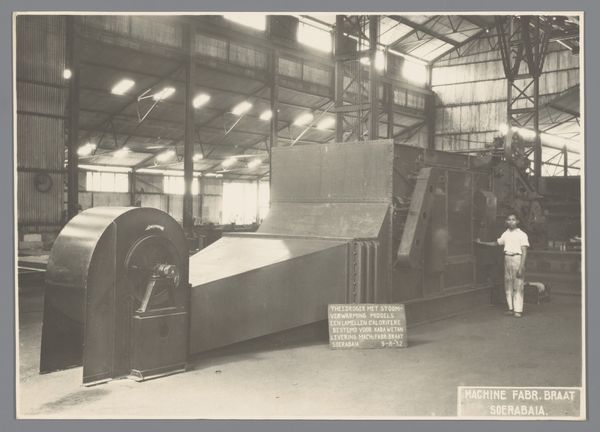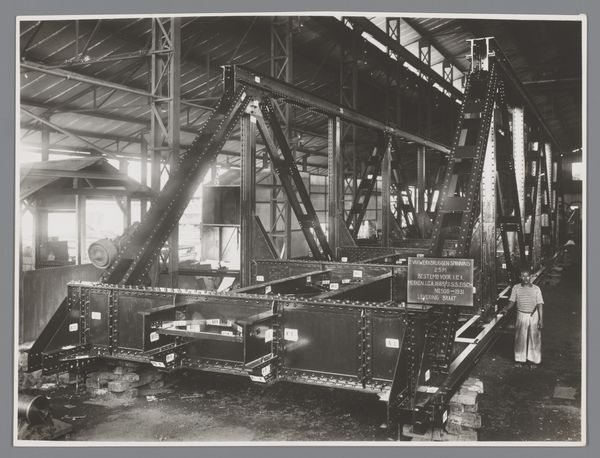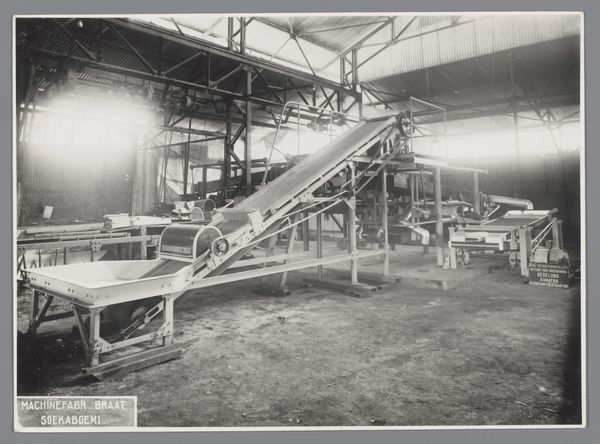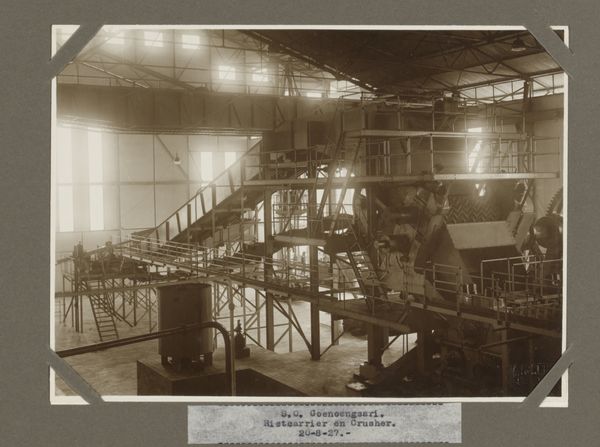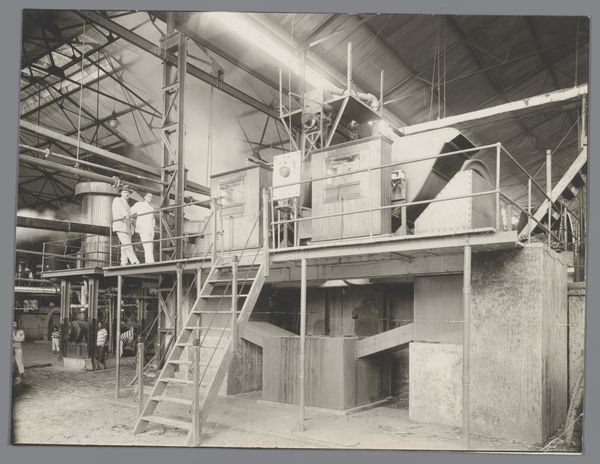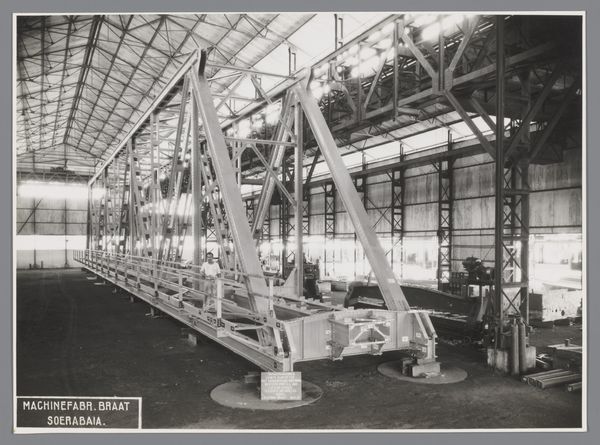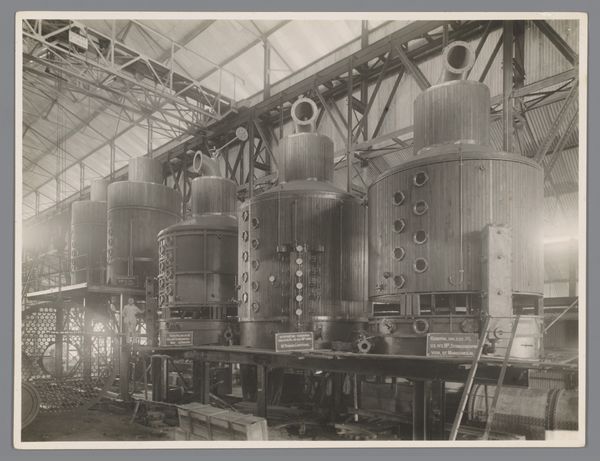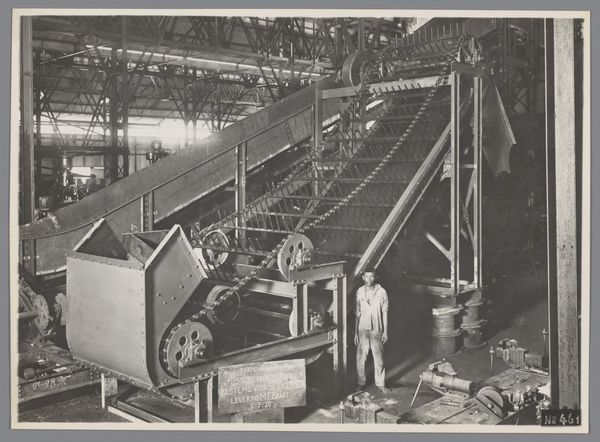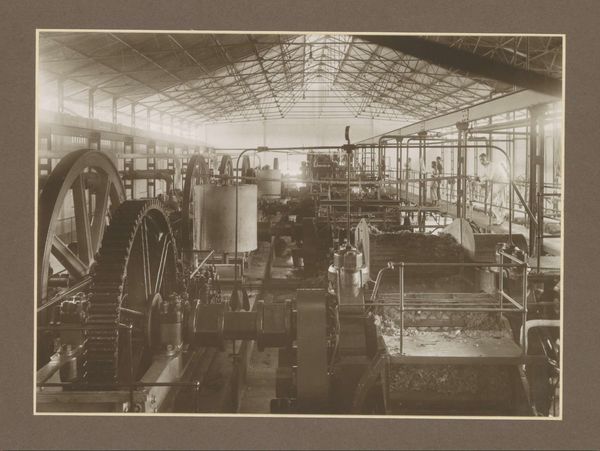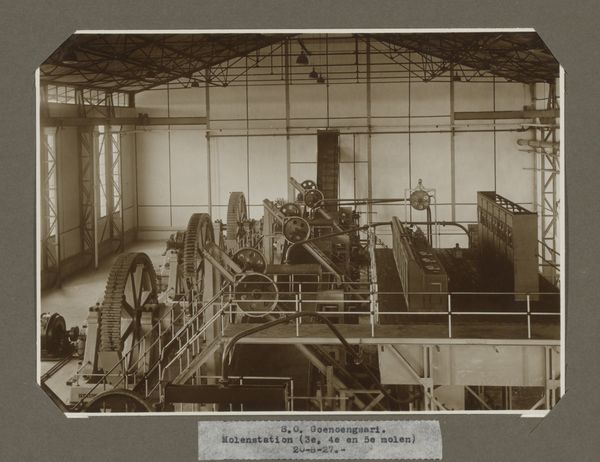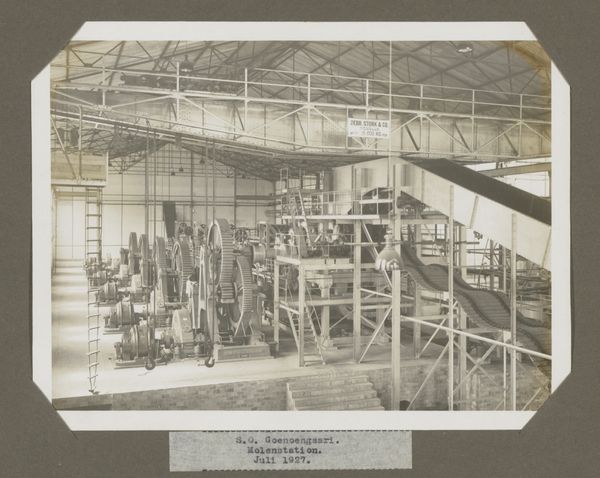
metal, photography
#
metal
#
desaturated colours
#
archive photography
#
photography
Dimensions: height 173 mm, width 227 mm
Copyright: Rijks Museum: Open Domain
Curator: At the Rijksmuseum, we have a compelling photograph attributed to around 1931 titled "Warmeluchtinstallaties," which translates to "Warm Air Installations." The print captures industrial equipment, seemingly made of metal, within what appears to be a factory setting. Editor: It strikes me immediately as… powerful. The photograph’s greyscale tones and the sheer scale of these mechanical structures evoke a feeling of monumental, almost mythical industry. Curator: Yes, the image speaks to the growing industrialisation of the era, showcasing complex systems like the titular warm air installations. Such factories played a central role in societal transformation, influencing everything from economic shifts to labour movements. The factory presented is labeled 'Machinefabriek BRAAT T.B. van Assendelft de Coningh SOEKABOEMI', giving it a precise geographic and industrial context. Editor: Beyond the socio-economic context, I am also interested in what these shapes and forms are meant to suggest in our collective memory. Those ducts, rising like chimneys or menacing pipes, perhaps symbolize not just productivity, but also the environmental cost, an echo of pollution that is now deeply etched in the cultural imagination of industry. Curator: That's a thought-provoking observation. Industrial photography often walks a line between celebrating progress and hinting at the environmental costs associated with this progress. It serves as a documentary artifact. Looking back we understand the relationship and changes in the role factories like this had on the economic context. Editor: Exactly. Even the monochromatic palette reinforces that feeling. It’s a deliberate stylistic choice or merely the limitation of period photography? The symbolism of progress versus the potential for devastation can still be relevant and explored through images such as this. It invites the viewer to contemplate what they are seeing through its visual vocabulary and, perhaps, question the trajectory we continue to chart. Curator: And what is it we choose to show from the past? These are always important things to consider, what is captured and remembered and why. Editor: Precisely. "Warmeluchtinstallaties" gives us a view of history but equally encourages us to consider our future trajectory with all these loaded images, then and now.
Comments
No comments
Be the first to comment and join the conversation on the ultimate creative platform.
